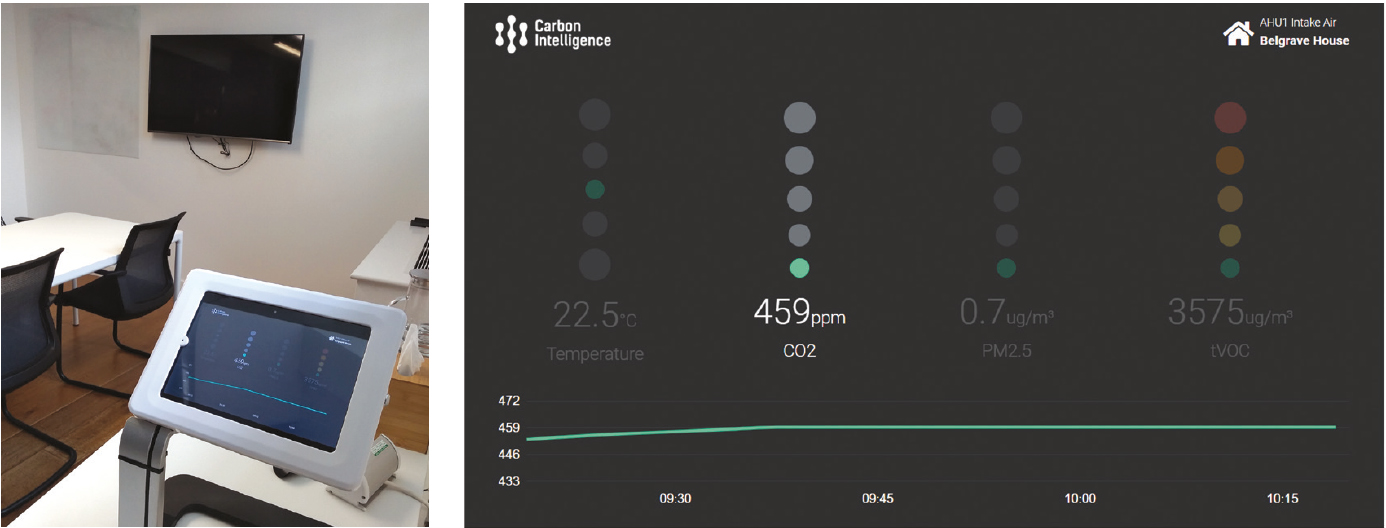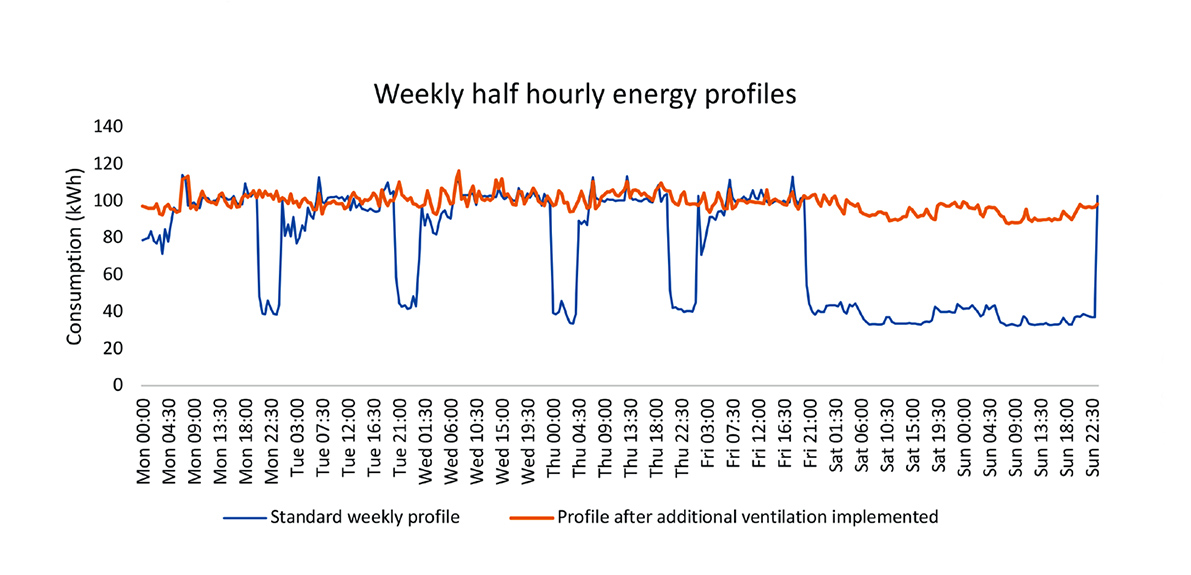
The Covid-19 crisis has put enormous pressure on businesses to reduce costs, while ensuring the health and safety of their staff. We’ve seen smart building technologies help facilities teams manage assets remotely, improve visibility, and allow greater control over building performance when it matters most.
In March, social distancing and lockdown measures came into force to curb the spread of the virus. With many buildings largely empty, facilities managers were presented with the challenge of reducing energy consumption to the minimum.
At Carbon Intelligence, we capture energy data from more than 40,000 buildings and provide many of our clients with data-driven insights, actions and optimisation services. Our services cover areas such as improving energy performance and comfort in buildings, as part of our mission to enable a zero-carbon economy.
Shortly after lockdown, we carried out a macro-scale analysis on 300 buildings with high-quality, half-hourly electricity data. Many may think an empty building should result in close to no energy consumption, but we found that, even in the best-performing buildings, energy consumption was only around half of pre-lockdown levels. The worst 10% of buildings only reduced energy consumption by 3% in the first week after lockdown.
As lockdown continued, we saw more buildings gradually reduce their energy spend, but those with the three key ingredients of visibility, control and proactive management continued to outperform the rest, and responded to changes the fastest. We recommended optimisation measures that our clients could implement quickly during the low-occupancy period (see panel, ‘Top tips during lockdown and low-occupancy periods’).
Data – the missing piece of the puzzle
Empty buildings and a livestream of data have given our engineers the opportunity to reveal many hard-to-find issues and unlock huge, long-term environmental and financial gains. Some examples include faulty or miscalibrated sensors, passing valves and control issues, which cause a false demand whether or not buildings are fully occupied – but these issues are a lot easier to identify in empty buildings.
Above all these issues sat one key finding from our analysis; buildings, in general, are not designed to respond to very low loads and there will always be some unavoidable baseload.

Figure 1: Changes in electricity profiles before and after lockdown for average, best- and worst-performing buildings
Net zero is a hot topic at the moment, and we know – from UK Green Building Council and LETI guidance – that a standard office will need to achieve an energy-use intensity of 70kWhe.m-2 of net lettable area per year to be aligned with a net-zero future. Lockdown has shown us that even an empty building is a long way from achieving this intensity. Our analysis on a sample of air conditioned UK offices during lockdown shows that, if a reduction trend similar to the one seen during lockdown were to be seen over the course of a year, an energy intensity of 160kWhe.m-2 of net lettable area per year could be expected.
The Covid period has illustrated the scale of the challenge ahead for the industry, but data-driven design and actions will make that journey a lot easier.
Returning to the workplace
We all want to see a safe and successful reoccupation of commercial real estate. Building managers and engineering teams are working hard to create this safe environment by following best-practice guidance from organisations such as CIBSE and REHVA.
In an era of Covid health and safety in the workplace is a complex subject. Our engineers have discovered a huge awareness gap between guidelines and operating regimes in buildings that have been modified to be compliant with guidelines. We have seen a range of issues, such as: recirculation dampers being open when building operators think they have closed them; thermal wheels running when they should not be; and air handling units (AHUs) not operating for longer hours because of a lack of understanding of the new guidelines.
Moreover, as best-practice guidelines are continually updated (based on evolving knowledge of Covid-19 transmission risk) and building management teams juggle competing priorities with limited time, ventilation strategies may end up delivering sub-optimal air quality for building occupants. Building fit-outs, locations of ventilation supplies and extracts, and ventilation balancing also have big impacts on overall air circulation and creating small areas of stagnant air.
Even an empty office building is a long way from the energy-use intensity needed to be aligned with a net-zero future
To add further certainty to how our clients are reoccupying their buildings, and give them another level of visibility and control, we have created a new data service to shed light on how different areas are performing in real time, using CO2, temperature and humidity as metrics to measure the ‘freshness’ of the air. The aim is to enable building managers to optimise ventilation strategies, and make occupants feel informed and able to make decisions.
Data from sensors give us insights that have previously been inaccessible, including how many people can be using different areas, and for how long, while receiving healthy air quality. We have been trialling this approach in our own office and meeting rooms, and have seen some very interesting results, as shown in Figure 2.

The rooms with the highest CO2 levels (Alexandra and Greencoat) are the smallest rooms in the office, with no windows or dedicated fresh air supply. Data has helped us conclude that only a single user at a time can use these rooms and, even then, with the doors open. The data also allows us to understand how many people can use other spaces simultaneously, for what length of time, and under what conditions. We are continually monitoring this data and displaying it live to empower users to make decisions, act, and feel comfortable using the space.
We have found that leaving meeting room doors and windows open, as well as leaving a short time in between meetings to ‘flush out’ the rooms with fresh air, has the biggest impact in ensuring that air quality is optimised through sufficient air changes.

Figure 3: Indoor air quality monitor in meeting rooms
As temperatures cool and the ability to open windows becomes limited, we will be able to use this data further to make informed decisions about how we use our office space – for example, by reducing the capacity of some meeting rooms.
Covid safety, comfort and energy – is there a conflict?
There is no doubt that running ventilation for longer increases energy bills, especially where heat recovery is not available or not permitted. The extent of this additional energy demand can be very high. In a number of buildings, we have seen energy use increase by as much as 80% compared with pre-Covid levels, because of the additional hours of ventilation, heating and cooling, especially if AHUs do not have speed control.

Figure 4: Electricity load profiles for a typical London office before and after implementation of increased ventilation
In conclusion building managers and engineers are telling us there are three factors to be aware of when reoccupying buildings.
One is to mitigate extra costs that arise from increased ventilation levels and associated increased heating and cooling of air.
Another is to communicate that your building is a safe place to work – this ensures confidence for the returning building occupants. And the third factor is to use data and systems for visibility and control of the building, so that ongoing assurance of the safety of the workspaces is possible.
All three are possible, but will often require additional or new sensors and processes.
Top tips during lockdown and low-occupancy periods
Some optimisation quick wins we recommended to our clients during the low-occupancy period included:
- Changing time schedules
- Changing settings on empty floors that were being controlled to comfort conditions, which, in turn, brought on HVAC systems as a whole
- Relaxing temperature set points and deadbands while protecting the fabric
- Avoiding hours with Distribution Use of System Charges (DuOS) red bands when carrying out plant exercising and flushing, to prevent unnecessarily high electricity costs and relax pressure on the grid
- Making the most of passive night-time cooling and avoiding running chillers if possible
- Taking action to reduce unused small-power loads being left on or automatically switched on, such as computers, TVs and vending machines
- Engaging with tenants. This has been an important part of this process, and the data we provided really helped building managers get their tenants’ buy-in to make changes to their demises
About the author
Khasha Mohammadian is senior energy performance consultant at Carbon Intelligence
